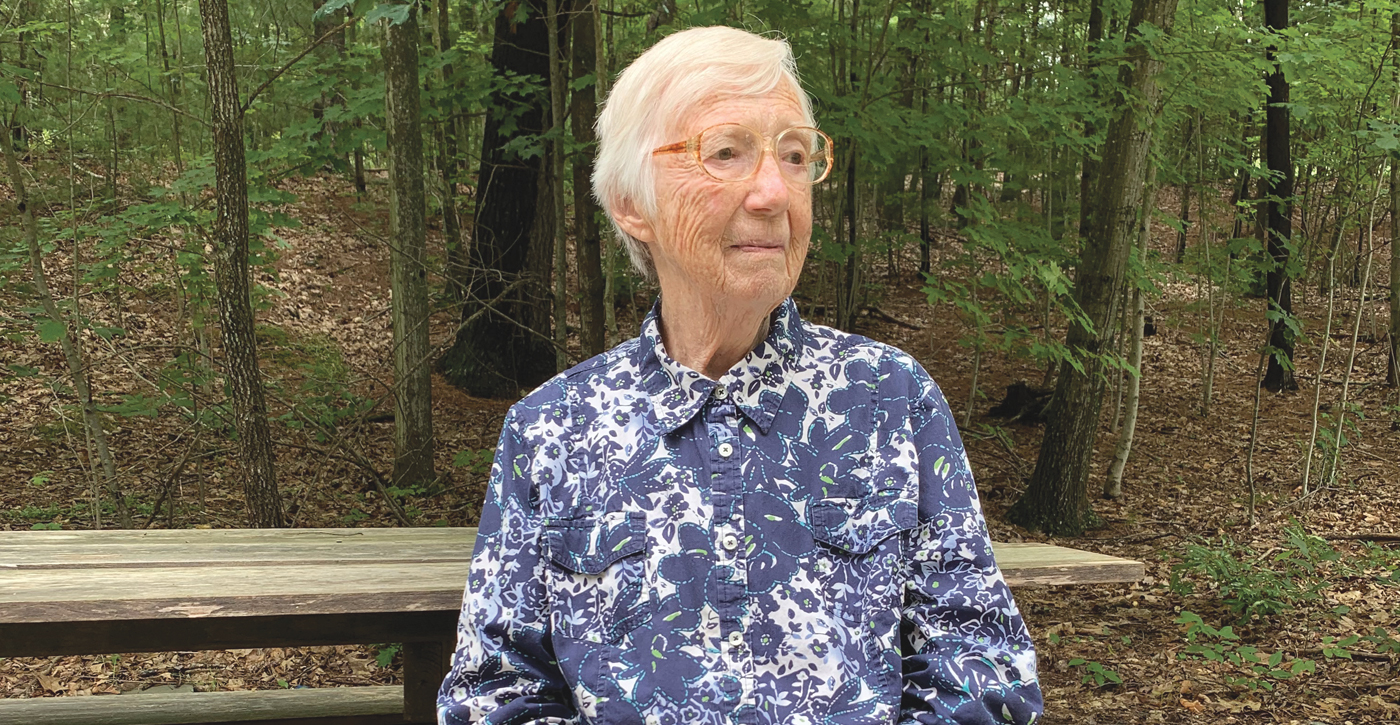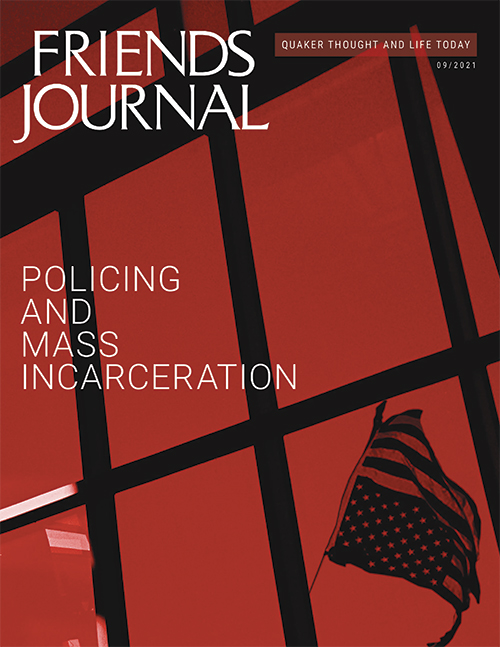Mary Cadbury Remembers 40 Years of Prison Worship
Mary Cadbury did not want to go to prison. “I thought that was nonsense,” she recalls. Nine Partners Quarter of New York Yearly Meeting had scheduled an upcoming meeting at Wallkill Correctional Facility in Walkill, New York. “I didn’t think we had anything to do with prisons. Why would we meet in a prison?”
But that was more than 40 years ago, before Mary developed a sense of sympathy, not initially for the prisoners but for a fellow member of Bulls Head (N.Y.) Meeting, Marge Currie, who kept talking about a Quaker worship group at Green Haven Correctional Facility in Stormville, New York, a maximum-security prison. “Marge spoke a lot about it, and I began to feel sorry for her. She needed support.”
The decade had begun with a deadly prison riot. Some 2,000 prisoners, demanding better living conditions, took control of Attica Correctional Facility in Attica, New York, for four days in 1971, holding staff members hostage during tense negotiations. State police dropped tear gas into the prison yard and opened fire. More than 40 people died—more than 30 were prisoners—and the need for prison reform gained national attention.
Marge had perseverance. “Did you know Marge?” Mary asks, laughing. So Mary had a change of heart. “I felt free to go into the prison. I felt that visiting was a matter of grace.”
It was a time-consuming grace. In the late 1970s, Mary and Marge spent every Friday afternoon and evening at Green Haven Correctional Facility. The afternoon was dedicated to a small meeting with three or four prisoners on the program committee, planning for evening talks after worship. The evening meeting for worship drew a substantially larger group.
“Prison was much more open in those days,” Mary remembers. In this post-Attica era, the Department of Corrections was pleased to have volunteers and new programs. Prisoners were welcome to drop into Friday worship services as they wished, exploring Quakerism or other faiths and returning as led.
As a result, meetings were large, with 20 to 30 prisoners and four or five volunteers. Casual attendance was not without drawbacks. Mary, now a vigorous 96-year-old, recalls the evening when one prisoner exposed himself to her, but she weathered that incident without trouble. “Virginia Woolf—who knew something about Quakers—said once that Quakers are notoriously long-lived and not susceptible to shock.”
In fact, she found the prison worship gathering a comfortable place. “We were never nervous,” Mary says. “We always had the sense that the prisoners who knew us were very attentive to our care.” In addition, Mary was always in the presence of Friends. Among them were Larry Apsey, founder of the Alternatives to Violence Program (AVP), and Bernard Lafayette, who had been an associate of Martin Luther King Jr., helping to organize movements in Selma, Alabama and Nashville, Tennessee. He was now conducting AVP training at Green Haven.
“I think it was a safe place for all of us,” Mary says. “We also had, once a year, a Saturday program where we could all be together and have speakers.” At one such gathering, a man from Poughkeepsie (N.Y.) Meeting talked about his work with abused children. One prisoner listened with special attention, piecing together the scenes of his own life in a new way. “He learned that he had been an abused child. I have never forgotten that. This man learned how to describe his childhood. It was helpful to him.”
In prison, meeting for worship can reach a deep humility as well as a tender unity. The spiritual space shared by prisoners and visitors can be a surprise and a joy. “We were at our best, and they were at their best,” Mary remembers. “To be with people who are trying to be better is very exhilarating.”
Mary recalls another prisoner, who objected to her performance as outside coordinator. “He was a very intelligent man, and like many prisoners, he began to understand Quaker process.” In this case, he used it “in ways we didn’t expect.” He questioned Mary’s work with the gathering and asked for her to be eldered. Larry Apsey and Steve Angell, another early leader of AVP, met to listen to the prisoner’s concern. They determined that Mary’s work did not require correction.
In time, the post-Attica experiment with volunteers and AVP became more restricted by Department of Corrections regulations. Today, prisoners must get permission to attend a religious gathering, and at the end of a brief trial period, they must commit to one religious group and no others. Furthermore, Friends from the outside world who worship in the prison are not allowed to also visit or correspond with individual prisoners.
Such tightening regulations and heightened enforcement led Mary out of the prison. “One of the men had been transferred and wrote that there was a pair of shoes that he hadn’t had enough money to have sent to him. I called and said I would send the money. It came to the attention of the superintendent. So they were ready to have me out, and I was ready to leave.”
It was 1997, and Mary had served roughly 20 years. Rather than ending her connection to the prison, however, she used the opportunity to shift her role. No longer a volunteer inside Green Haven, she could correspond with specific prisoners, helping them to keep a personal, individual connection to Quakerism, even when they were transferred elsewhere. It was a lifeline for some of them, and she continues it today. “I think it’s about six men that I write to now. Some I’ve never met.”
Prisoners write letters about a variety of things. “Some of them are quite deep,” she says. Others are looking for a female friend, so Mary makes it clear that she is not interested in a romantic relationship. Otherwise, she responds to the prisoner’s account of his experience: problems, for example, or prison programs. One letter recently included a drawing, which Mary thought was quite good. “So I encourage what he has done.”
If that role sounds maternal, Mary agrees. She recalls the special significance she felt at the prison around Mother’s Day, noting that prison volunteers were often “all these matronly women.” Mary has good memories of prison worship, especially in the more free-flowing early years. “We had worship, and then we had a time for fellowship. We were allowed to bring refreshments. Marge would bring flowers. We were sharing, so it was a give and take.”
And it was more. In prison, meeting for worship can reach a deep humility as well as a tender unity. The spiritual space shared by prisoners and visitors can be a surprise and a joy. “We were at our best, and they were at their best,” Mary remembers. “To be with people who are trying to be better is very exhilarating. That’s often true at yearly meeting, too. It’s a special time, when people are trying to learn from one another and be better.”






‘Tis the gift to be simple….